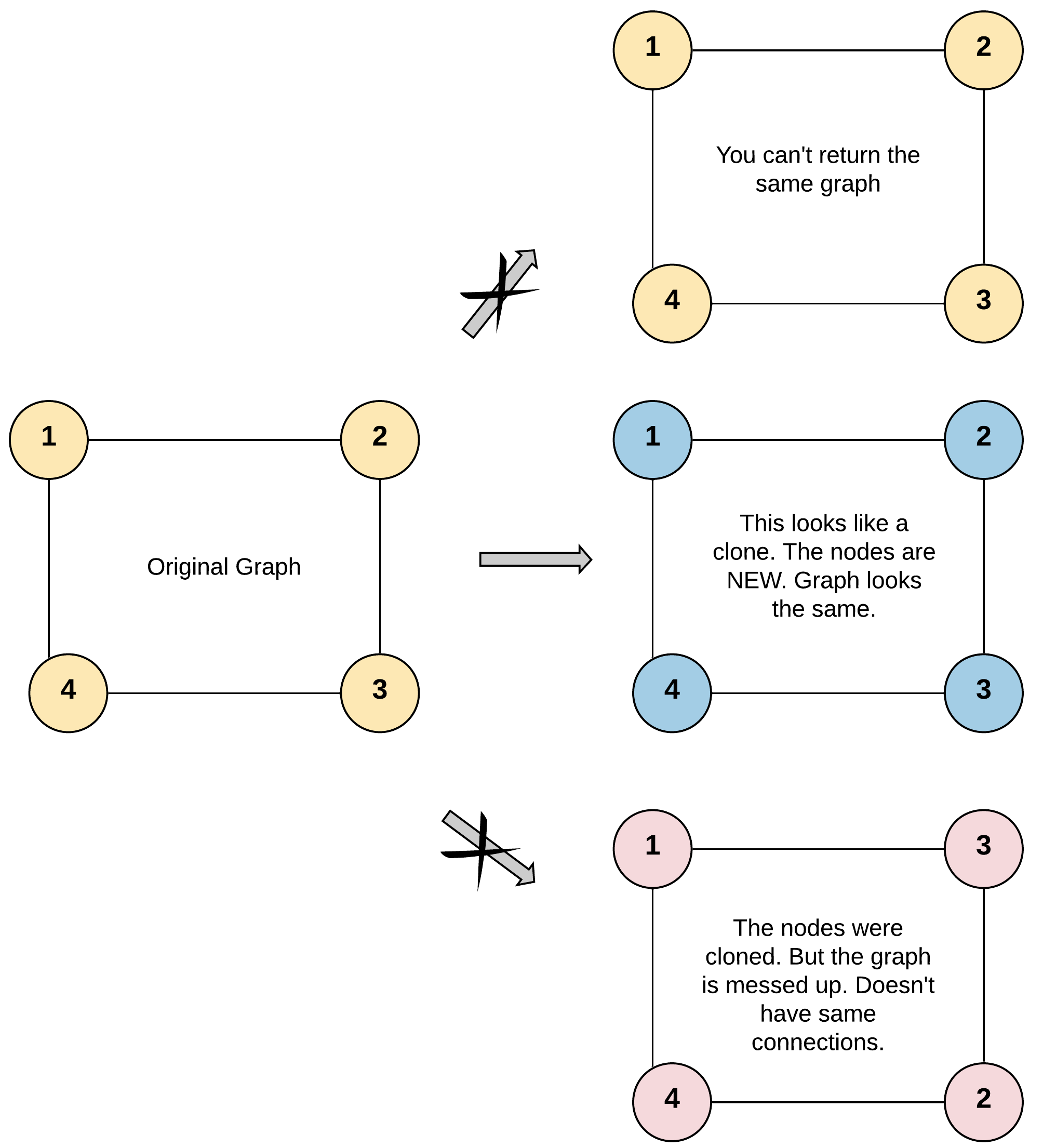克隆图。题意是给一个图中的某一个node的reference,请你深度克隆整个图。图中的每个节点包含他的值和邻接表。例子,
class Node { public int val; public List<Node> neighbors; } Input: adjList = [[2,4],[1,3],[2,4],[1,3]] Output: [[2,4],[1,3],[2,4],[1,3]] Explanation: There are 4 nodes in the graph. 1st node (val = 1)'s neighbors are 2nd node (val = 2) and 4th node (val = 4). 2nd node (val = 2)'s neighbors are 1st node (val = 1) and 3rd node (val = 3). 3rd node (val = 3)'s neighbors are 2nd node (val = 2) and 4th node (val = 4). 4th node (val = 4)'s neighbors are 1st node (val = 1) and 3rd node (val = 3).
Input: adjList = [[2,4],[1,3],[2,4],[1,3]] Output: [[2,4],[1,3],[2,4],[1,3]] Explanation: There are 4 nodes in the graph. 1st node (val = 1)'s neighbors are 2nd node (val = 2) and 4th node (val = 4). 2nd node (val = 2)'s neighbors are 1st node (val = 1) and 3rd node (val = 3). 3rd node (val = 3)'s neighbors are 2nd node (val = 2) and 4th node (val = 4). 4th node (val = 4)'s neighbors are 1st node (val = 1) and 3rd node (val = 3).
思路是BFS。这个题也可以用DFS做但是我个人觉得BFS比较好记。具体的做法是创建一个visited hashmap记住<原来的node,新的node>之间的对应关系,和一个queue。
一开始,先把当前唯一的节点node加入queue并且把当前节点当做key存入hashmap,map的value是一个有着相同node.val但是只有一个空的邻接表(neighbors)的node;
然后从queue中开始弹出元素,每弹出一个元素cur,判断这个node的每一个邻居是否存在于hashmap,将不存在的邻居加入hashmap,同时也将这些刚刚加入hashmap中的邻居再次加入queue进行下一轮遍历;如果有某一个邻居已经存在于hashmap了,则往cur的邻接表里面添加这个已经存在的邻居的copy。
时间O(V + E)
空间O(n) - queue
Java实现
1 /* 2 // Definition for a Node. 3 class Node { 4 public int val; 5 public List<Node> neighbors; 6 7 public Node() { 8 val = 0; 9 neighbors = new ArrayList<Node>(); 10 } 11 12 public Node(int _val) { 13 val = _val; 14 neighbors = new ArrayList<Node>(); 15 } 16 17 public Node(int _val, ArrayList<Node> _neighbors) { 18 val = _val; 19 neighbors = _neighbors; 20 } 21 } 22 */ 23 24 class Solution { 25 public Node cloneGraph(Node node) { 26 // corner case 27 if (node == null) return null; 28 29 // normal case 30 HashMap<Node, Node> visited = new HashMap<>(); 31 Queue<Node> queue = new LinkedList<>(); 32 queue.add(node); 33 visited.put(node, new Node(node.val, new ArrayList<>())); 34 while (!queue.isEmpty()) { 35 Node cur = queue.poll(); 36 for (Node neighbor : cur.neighbors) { 37 if (!visited.get(neighbor)) { 38 visited.put(neighbor, new Node(neighbor.val, new ArrayList<>())); 39 queue.offer(neighbor); 40 } 41 visited.get(cur).neighbors.add(visited.get(neighbor)); 42 } 43 } 44 } 45 }